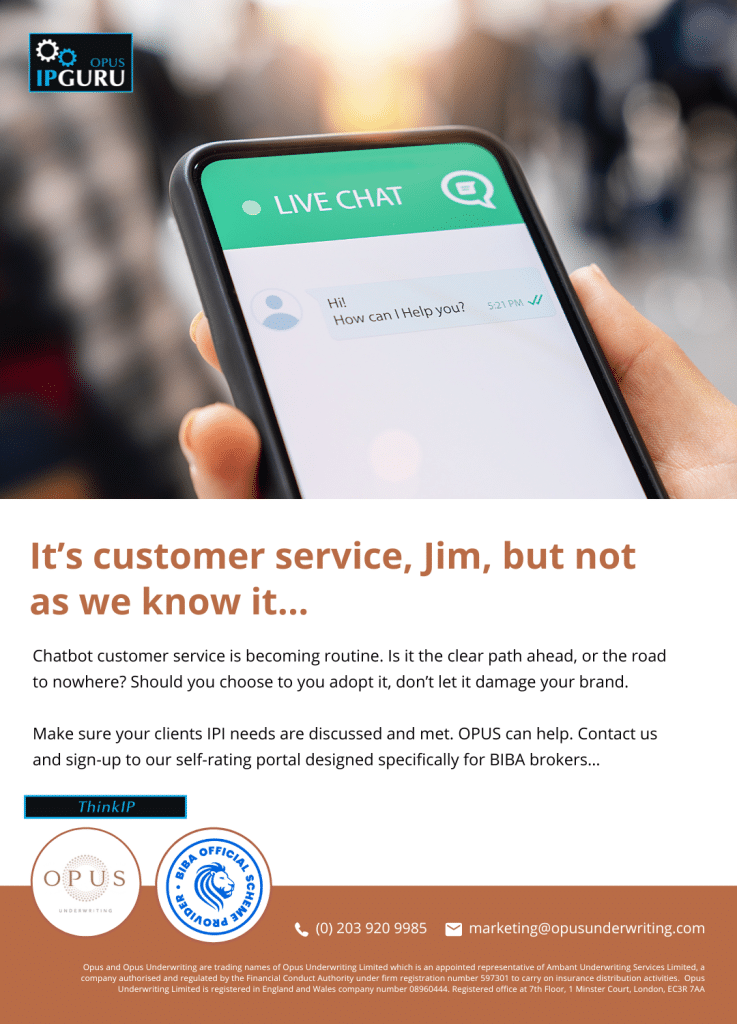I Chatbot
When Isaac Asimov penned his classic story in 1950, it’s unlikely he let his sexy, ethereal, imaginative writing dwell on the realities of dealing with robots in customer service roles. Jump-cut 75 years to the here and now and ‘they live among us.’
Frankenstein
Some may find AI customer service (or AI-assisted – which it mostly is) progressive, intuitive, and childishly easy to use. Others reach for nearby branches, Basil Fawlty-like, to beat the offending inanimate object in a fit of frustrative rage, giving the dumb messenger-PC a “…damn good thrashing”.
There doesn’t appear to be much middle ground. And that’s a potential problem for big-brand-businesses investing in and inserting a layer of customer-service AI between it and you. They may see it as a gentle, re-assuring pathway to problem solving without staff. Some customers may view it differently – more like an impenetrable armor-plated shell. Done well, it could enhance customer experience and promote your brand. Done badly, it can trash it and revalue your business. Your brand is one of your biggest intellectual property assets. Is it worth the risk?
Brave new world
So why is customer-service AI kicking up a storm? According to Grand View Research, the global chatbot market is expected to expand at a compound annual growth rate of 23% from 2023 to 2030. With the potential advantages AI can deliver, it’s easy to see why. Result: there’s big money in chatbot tech.
Given the opportunity to automate a variety of roles, AI can be a convenient way for businesses to save on employment costs, all while projecting a 24/7, consistent public image. Who wouldn’t want all their customers to be greeted with a friendly and polite voice that represents their brand image. A chatbot can do that, reliably, with no bad hair days. It’s easy to see why companies such as Juniper Research predict chatbots will save companies around $8 billion a year in customer service costs.
All the colours of darkness
Look at Air New Zealand’s highly successful chatbot, Oscar. He’s handled over 1.2 million customers since launching in 2017, allowing Air New Zealand to significantly cut its human support staff. When AI works this well, why employ humans and endure the hassle of managing them?
Herein lies an obstacle to progress. That is; the temptation to treat AI as an easy fix to a complex problem. In truth, a chatbot can falter just like a human, and like a sentient agent, a company can be held liable for misinformation its chatbot delivers.
Air Canada found this out recently when successfully sued over its customer-service chatbot, which provided false information about the airline’s refund policy. A vicarious liability extension – no less.
The rest of the robots
We know that outside the customer support arena, chatbots can prove a liability risk, as the American law firm Levidow, Levidow & Oberman found out when it was fined $5,000 after submitting false citations from ChatGPT in a court case.
Machineries of joy
Reaction from consumers towards customer-service AI has been mixed. According to research by Dashly, an AI service provider, 50% of customers surveyed said they like to talk with AI chatbots. Salesforce, an American software company, asserted 69% of consumers prefer interacting with chatbots for quick communication. Considering both these companies have a vested interest in promoting AI, it’s perhaps surprising the figures cited are so low. Despite some positive statistical chatter, if you choose to use AI for your customer support, don’t expect a wholly positive reception.
Stranger in a strange land
Robotic customer-service ‘progress’ is not being told, amidst a blizzard of positive emojis, you are being transferred to a different queue and thank you for your patience. At its worst, it can take nearly a dozen failed emails, cast blindly into chatbot hell, to ineffectually lane-hop to nowhere.
Fahrenheit 451
Research strongly suggests a chatbot customer interface is no ‘out of the box’ solution. If you think it is, beware, be afraid, it could tank your brand. Current experience suggests chatbots need customer-focus training perhaps as much as real staff. Maybe they need emotions too? There’s a thought. It seems most big brands don’t think of this as they reach for the pad of P45’s and an enhanced annual director’s bonus. The first iteration of your chatbot customer service system is unlikely to be your last – if you’ve any sense and value your IP and reputation. And, just like hiring staff that fit your mission/values/vision, get the right bot from the get-go. One that speaks for your brand. It’s your virtual shop window for heaven’s sake.
Do this and you just might avoid offending Asimov’s first law of robotics:
“A robot may not injure a human being or, through inaction, allow a human being to come to harm”.
Because harm, surely, includes increasing human blood pressure.
Joseph Burton
Research Assistant
OPUS Underwriting Limited
+44 (0) 780 145 9940
underwriting@opusunderwriting.com








